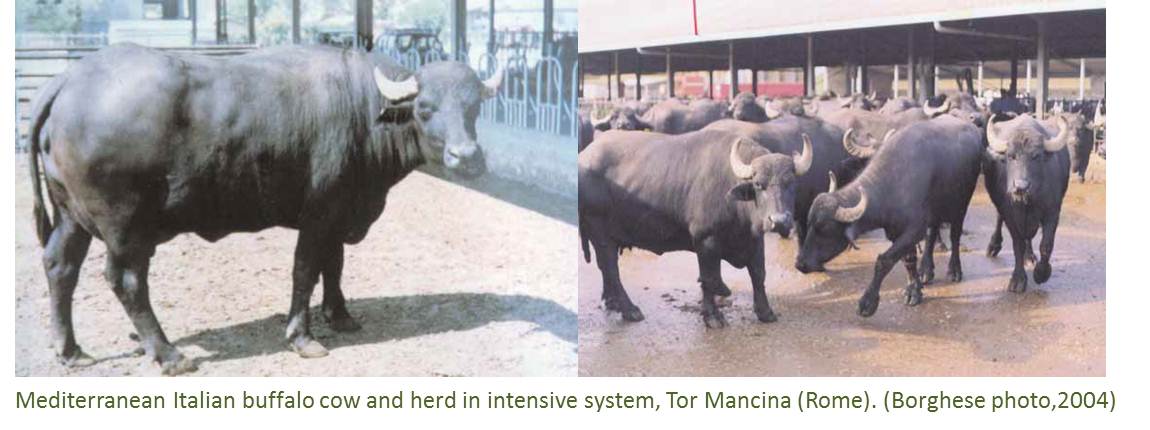Mediterranean or European
The back is short. The rump is short. The udder is medium size with squarely placed quarters and halves; the teats are cylindrical. Where machine milking is popular (only in Italy) udders are more regular and better shaped. Size, weight and productivity vary a lot according to the environment and management. Average herd size is below five breedable buffaloes in most countries, except in Italy where it is 90. The proportion of breedable females to total buffaloes is about 45 percent except in Italy where it is 62 percent, since males have little market potential.
The body weight of the adult female is 450-650 kg.

Distribution
Italy: 265 000 (Mediterranean Italian breed); Romania: 100 000; Brazil: 10 000; a few thousand in Greece, Albania and TFYR Macedonia; a few hundred in the United Kingdom, Germany, The Netherlands, Switzerland and Hungary.
Husbandry
The most common housing system is the one referred to as traditional, consisting of keeping buffaloes indoors at night and confined in fenced areas during the day. In the favourable season they are allowed to graze during the day. In Italy, they are housed loose in paddocks all year long, with the same modern systems used for dairy cows. One third of Italian buffaloes are also put out on pasture in the favourable seasons, or green forage “cut-and-carry” such as alfalfa can also be used. Maize silage, concentrates and by-products are the basic foodstuffs in Italy. Performance varies very much depending on the area. There is no common practice to wean buffalo calves. When milking is done by hand, both male and female calves suckle from the dam. In some cases they suckle from a dairy cow. This results in a wide difference in daily gain up to weaning, as well as weaning weight and age. Males are now in greater demand as meat producers, therefore increased attention is being paid to their feeding and health. Average daily milk yield reveals a huge variability, mainly depending on the feeding system. It can range from 3 to 4 kg milk/day for poorly fed animals to 15 kg/day in intensive management systems. In Bulgaria, Romania, TFYR Macedonia, Greece and Albania, extensive management systems are employed. Average slaughter weight is 250-400 kg, at the age of 12-15 months.
Lactation duration : 270 days
Milk yield : 900-4 000 kg
Milk fat : 8.0 percent
Milk protein : 4.2-4.6 percent
Products :Mozzarella, treccia, scamorza and other cheeses, ricotta (Italy); Vladaesa cheese, Braila cheese (Romania); White brine cheese (Bulgaria, Romania); yoghurt, meat and meat industry products: bresaola, salami, sausages, cacciatorini (little salami), etc.
Sources: Borghese and Moioli, 1999; Borghese et al., 2000; Borghese, 2005; Stravaridou, 1998; Bikocu, 1995; Popovici, 1996; Bunewski, 2000.
